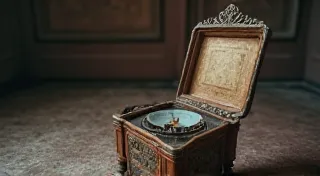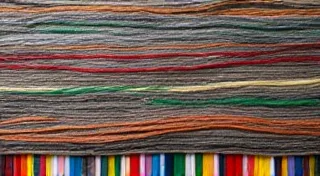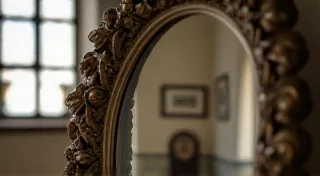A Tapestry of Time: Combining Bookmarks and Marginalia
There’s a peculiar intimacy that settles over you when handling truly old books. It’s more than just the scent of aged paper, a beloved and familiar aroma. It’s the feeling of connection – to a past reader, a forgotten life, a moment suspended in time. And nestled within the pages of these antique volumes, often clinging stubbornly to their original place, are bookmarks – small, unassuming artifacts that offer a unique window into that vanished interaction. Collecting vintage bookmarks isn't simply about acquiring pretty paper or delicate metal; it’s about piecing together fragments of a story, a dialogue across centuries.
I remember discovering this fascination years ago, while browsing a dusty antiquarian bookstore. I’d always been drawn to old books, but it was a first edition of “Wuthering Heights,” tucked away in a dark corner, that truly ignited my obsession. Inside, pressed between the brittle pages, was a silk bookmark, its original embroidered design faded but still hinting at a vibrant floral pattern. It wasn’t valuable in the conventional sense, but the feeling of holding something that had marked a place in that very book for someone else – someone who had likely wept over Catherine and Heathcliff – was profoundly moving.
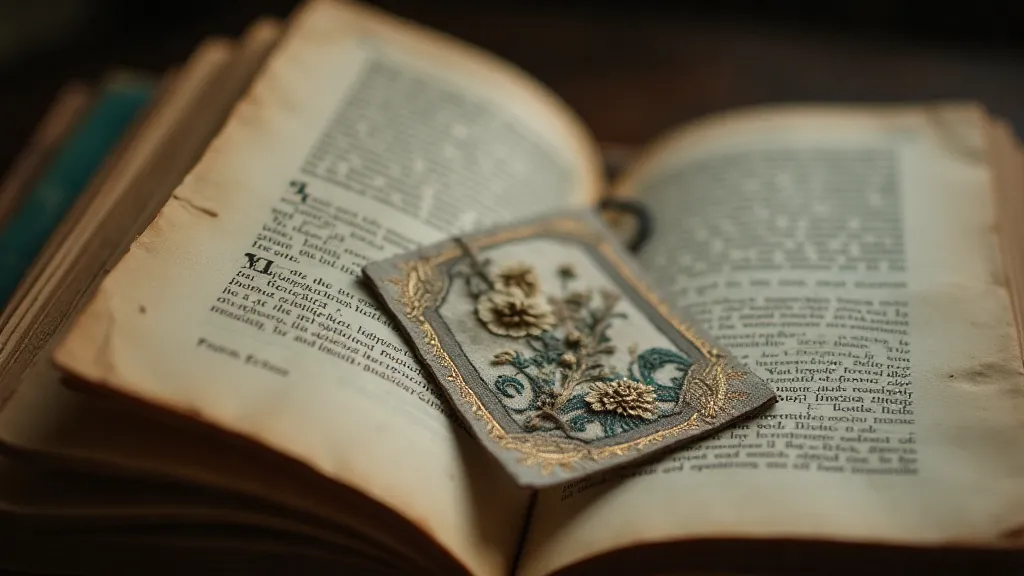
The Silent Dialogue: Bookmarks and Marginalia
The true magic unfolds when you consider the relationship between bookmarks and marginalia – the handwritten notes, underlines, and occasional doodles that pepper the margins of antique books. A bookmark doesn’t just hold a page; it signals a point of engagement. It suggests a pause, a moment of reflection. Marginalia, on the other hand, screams engagement – a reaction, a question, a connection forged between the reader and the text.
Imagine finding a bookmark made of pressed flowers, nestled beside a marginal note commenting on a particularly poignant passage in a Victorian novel. Or a meticulously crafted paper bookmark, its edges gilded, marking a philosophical argument in an early edition of Kant. The bookmark isn't just a marker of location; it's a subtle commentary on the context of the marginalia. Perhaps the reader found comfort in the delicate beauty of the bookmark while grappling with difficult philosophical concepts. Perhaps the pressed flower offered a moment of respite from the emotional intensity of the novel. The artistry displayed in some vintage bookmarks, particularly in their composition and arrangement, is remarkable – it's as if they were designed to complement the text itself. Those interested in exploring this aesthetic further might enjoy reading about Paper Constellations: The Art of Bookmark Composition and Arrangement.
Craftsmanship and Materials: A Glimpse into the Past
The materials used to create vintage bookmarks are often as revealing as the books themselves. Before the mass production of printed materials, bookmarks were frequently handcrafted, reflecting the ingenuity and artistry of their creators. Silk, linen, and velvet were common for the wealthy, offering a luxurious contrast to the more utilitarian paper bookmarks of the middle and working classes. Metal bookmarks, often silver or brass, displayed intricate engravings and sometimes even tiny enameled scenes. These weren’t just functional objects; they were small tokens of personal expression, sometimes passed down through families as treasured heirlooms.
Paper bookmarks, while often less opulent, offer their own charm. Many were printed with advertisements, poems, or patriotic slogans, providing a fascinating glimpse into the advertising and social landscapes of bygone eras. Others were hand-cut from sheet music or newspaper clippings, demonstrating a resourceful and creative approach to everyday life. The fragility of these materials underscores the importance of careful preservation. Gentle handling and archival-quality storage are crucial for preventing further deterioration.
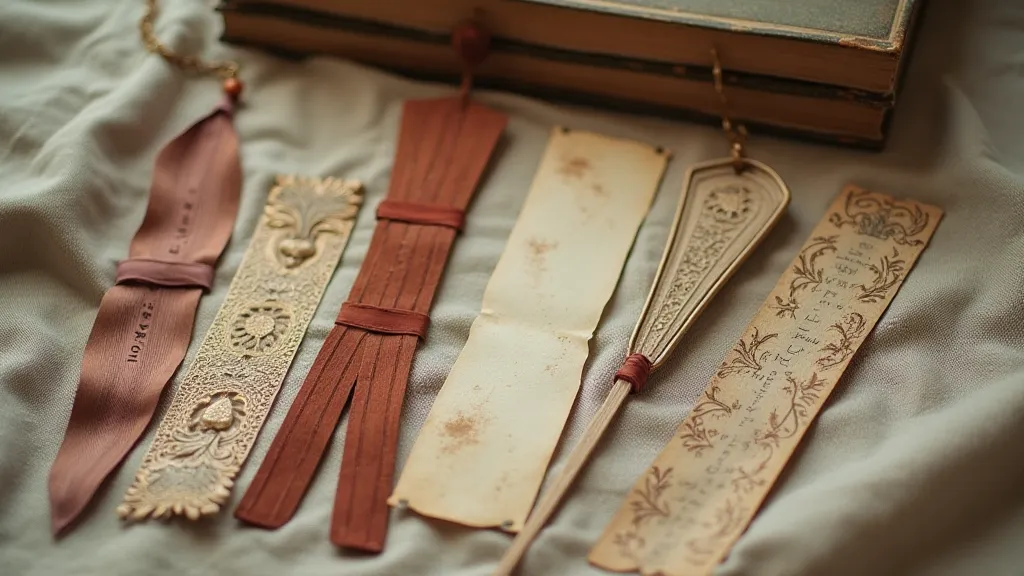
Historical Context and Social Significance
The prevalence and types of bookmarks found in vintage books can also illuminate broader historical trends. During the Victorian era, when reading was a highly regarded social activity, bookmarks were often exchanged as gifts between friends and family. They were a tangible expression of affection and shared literary interests. The rise of mass-produced paperbacks in the 20th century, however, led to a decline in the use of elaborate bookmarks, as fewer people felt the need to mark their place in a disposable novel. Examining the design elements and typography used on these older bookmarks provides a unique window into the aesthetic preferences of the time. For those captivated by the marriage of design and literature, further exploration of The Lexicographer’s Keepsake: How Typography Shapes Bookmark Aesthetics is recommended.
The condition of the bookmark itself can also offer clues about the book’s history. A heavily worn bookmark might suggest that the book was a well-loved and frequently read copy. A pristine bookmark, on the other hand, could indicate that the book was more of a decorative item, rarely opened. This speaks to the broader context of how books were valued and utilized – sometimes as sources of information, and other times as symbols of status or beauty.
The Allure of Botanicals: Pressed Flowers and Romanticism
Among the array of vintage bookmarks, those adorned with pressed flowers hold a particularly captivating appeal. These delicate reminders of nature, painstakingly preserved within the pages of cherished books, evoke a romantic sensibility that was especially prevalent in the Victorian era. The painstaking process of collecting, pressing, and preserving flowers speaks to a deep appreciation for beauty and a desire to capture fleeting moments of natural wonder.
The use of pressed flowers in bookmarks wasn’t merely decorative; it was imbued with symbolic meaning. Different flowers carried specific connotations, and the choice of flower could convey a subtle message of affection, remembrance, or admiration. The careful selection and arrangement of these botanicals transformed the humble bookmark into a miniature work of art, a testament to the creative ingenuity of its creator. This romantic inclination extended to many aspects of Victorian life, and the world of bookmarks was no exception. Those interested in understanding the romanticism of this era might enjoy a deeper dive into The Paper Garden: Pressed Flowers and the Romanticism of Vintage Bookmarks.
Preservation and Collecting Tips
For those interested in collecting vintage bookmarks, preservation is paramount. Store your bookmarks in acid-free sleeves or boxes to protect them from light and moisture. Handle them with clean hands or cotton gloves to prevent damage from oils and fingerprints. Avoid using harsh chemicals or cleaning agents, as these can further degrade the materials.
When evaluating vintage bookmarks for your collection, consider the following factors: material, design, condition, historical significance, and rarity. Look for bookmarks that are well-preserved and representative of specific historical periods or literary movements. Don't be afraid to research the history of the bookmark or its connection to the book it was found in. The more you learn, the more appreciation you’re able to gain for these pieces of history.
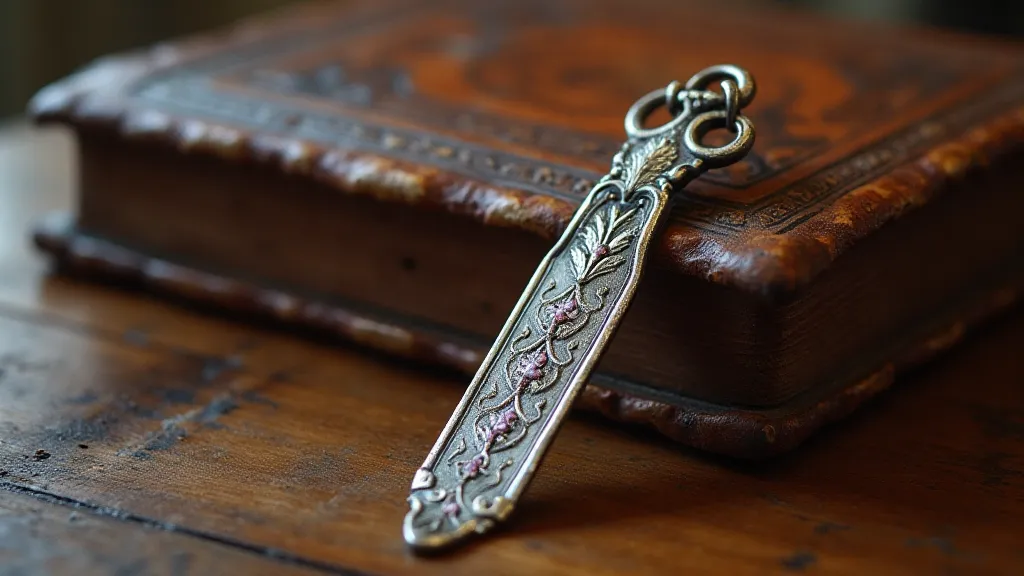
Beyond the purely aesthetic qualities, it’s important to understand the context in which these bookmarks were created and used. Understanding the historical background enriches the collecting experience and fosters a deeper appreciation for these small artifacts. Those keen to understand this intersection of art, design and history might find inspiration and information within
It’s also worth considering the synergy between the bookmark and the book. A particularly beautiful bookmark paired with a first edition of a beloved novel can be a truly exceptional find. The joy of collecting isn't solely about the object itself; it's about the story it tells and the connection it provides to the past.
Collecting vintage bookmarks is more than just a hobby; it's an act of historical preservation and a celebration of the enduring power of literature. Each bookmark is a fragment of a story, a whisper from the past, and a testament to the enduring human connection with the written word. To hold one is to touch a moment frozen in time, to glimpse the thoughts and feelings of a long-gone reader, and to feel a profound sense of connection to the grand tapestry of human experience. It’s a journey through time, a tangible link to past readers, and a poignant reminder of the enduring legacy of books and the artifacts that accompany them.

